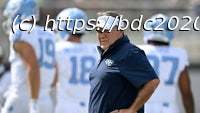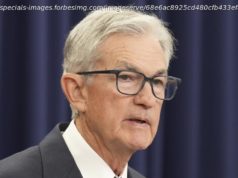Market crashes are poorly understood and don’t fit many of the ways we typically think about the market. Here’s why.
Traders work on the floor of the New York Stock Exchange (NYSE) in New York, U. S. Photographer: Michael Nagle/Bloomberg
Let’s face it, though the subject attracts a lot of attention, we aren’t on a firm footing in truly understanding extreme events, such as market crashes.
Many approaches to stock market analysis are statistical. This makes sense. Investing is rife with numbers and data and lots of time periods to slice and dice. In fact, most of the time, the markets appear to helpfully follow basic statistical models. However, it’s not that easy with market crashes. Here, there is surprisingly little data to go on, and many things that we might believe to be true simply aren’t.
Yes, the market will fall by about 10% about once a year on average. However, those bigger crashes where the market just carries on down that are prominent in market memory, are rare events. Since many statistical techniques are reliant on a lot of data for robustness, those same techniques may be out of their depth when examining crashes. In fact, these events seem to break the patterns that seem to govern the market most of the times.
A Relative Absence Of Data On Crashes
For example, we have around 20,000 days of trading date over the last century to help us understand day to day movements in stocks. Yet, for crashes there are only around ten to twenty events over the past century depending on how a crash is defined, so there’s simply less data to look at. More worryingly, at times of market stress the market’s behavior seems to change.
For example, really big daily price moves should be fairly uncommon, and during normal market periods they are. However, at a period of a crash, a lot of big moves can often be strung over just a few weeks, something called volatility clustering. This means that the models that hold up fairly well in normal markets, just aren’t relevant to a crash. Crashes are something like when a man changes into a werewolf, the normal rules for a human don’t apply. During a crash the stock market becomes a different beast.
The Tallest Mountain Problem
There are limits to examining historical data too. Nassim Taleb cites the error of believing that the highest mountain you’ve seen is the tallest. It’s far more likely that the tallest mountain is one you haven’t seen yet. In the same way with market crashes, we can look at market declines over different geographies and time periods, but it does not mean that there is necessarily any sort of hard limit there.
This leads some researchers to believe that the markets at times of crash are better approximated by a power law. A market crash is simply a one-day drop that repeats before stopping. As such, suggesting that we know when a market will hit bottom is not clear either.
Statistical Forecasts
Another criticism of certain conventional risks is that they regard market crashes as extremely unlikely. Market models suggested 2008 was an incredibly rare event. However, the 1930s crash was fairly similar. Having extremely improbable events just eighty years apart makes very little sense. Of course, we could be massively unlucky, but it is of course far more likely that the model is wrong. And by wrong, we should be clear that we mean inappropriate for the high stress environments of a crash. Most of the time these models hold up just fine, but at the extremes they don’t.
It’s Not The News
Stepping back from statistics and the numbers, it’s a general perception that stock market crashes are a response to unexpected and severe bad news. That would make sense right? The market is a very sophisticated machine whereby each individual buyer and seller trades on their information and the result is a market price that is, in a sense, smarter than any individual.
Though, again, that may be generally true, at times of severe market moves, surprisingly, often there is very little new news to justify the price change. Research on what moves stock prices, has found that prices can often move a lot without news. Also, in his book Irrational Exuberance, Robert Shiller finds that one of the biggest stock market moves of all time, 1987’s Black Monday decline wasn’t driven by any obvious economic event. Therefore, it’s not clear that market crashes are the result of some unanticipated bad news that shocks investors.
New Methods Of Examination
Since traditional statistical methods are perhaps less appropriate for extreme markets, other paths of examination may be more fruitful. For example the Santa Fe Institute is examining links between different disciplines. Potentially a market crash may have more in common with a growing pile of sand, than how the same market performs outside of a crash environment. When a gain of sand is added to an existing pile so the pile grows ever higher. Most of the time, on more grain will cause the pile to grow in height by a just fraction. However, at other times the addition of a single grain will lead to a collapse and in turn that collapse may be small, large or potentially even massive. Some researchers believe that better understanding these sorts of events hold the key for a better understanding of extreme market events, because today many traditional models simply fail to hold up.
I am Chief Investment Officer at Moola, and author of Digital Wealth (2015) and Strategic Project Portfolio Management (2009). I am a Chartered Financial Analyst charterholder with an economics degree from Oxford University and an MBA from Northwestern University’s Kellogg s…
Follow @simonwmoore on Twitter. Simon is author of Digital Wealth and CIO at Moola. Articles educational only, not intended as investment advice.






